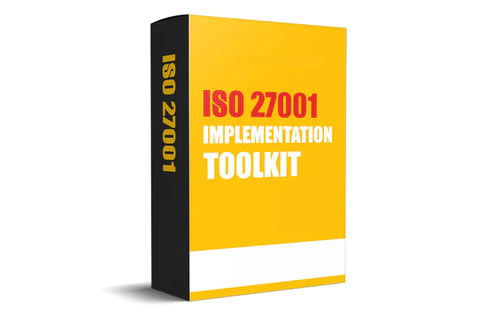ISO 27001 Certification: Your Blueprint For Success
In today's digitally connected landscape, safeguarding sensitive data has become a critical endeavor for organizations and industries of all sizes. ISO 27001, renowned for its focus on robust information security, provides a systemic framework to create, implement, and continuously improve an Information Security Management System.

ISO 27001 Certification Blueprint
This comprehensive guide will help you navigate the complexities of ISO 27001 certification. It provides insights, steps, and considerations to ensure a successful journey towards fortified data security.
1. Understanding ISO 27001: Laying The Foundation
It's essential to understand the ISO 27001 standard before embarking on a certification journey. This international standard defines the requirements to create an ISMS that protects sensitive information and ensures its integrity. It also outlines how to maintain its availability. ISMS is an integrated approach to managing risks that includes people, processes, and technology.
2. How To Conduct A Preliminary Evaluation: Assessing Readiness
To begin, you must first determine the current readiness of your organization in terms of information security. Assess existing policies, procedures, and controls against ISO 27001. This assessment will identify areas for improvement and gaps, providing a roadmap to the certification journey.
3. Setting Up A Project Team: The Champions Of Certification
Create a project team that is responsible for guiding the ISO 27001 process. This team should include individuals from different departments, including IT, compliance, legal, and operations. The collective expertise and commitment of this team will ensure the successful implementation and alignment with the organization's goals.
4. Determining The ISMS's Boundaries And Objectives
Define the scope of the ISMS and the boundaries that will be used to manage information security. Outline the ISMS objectives and set measurable goals. This exercise helps to clarify the objectives of ISMS and ensures that resources are allocated efficiently.
5. How To Conduct A Risk Assessment: Identifying Risks And Prioritizing Them
ISO 27001 is based on a comprehensive risk assessment. Identify any potential vulnerabilities and risks that may impact the integrity, confidentiality, and availability of information assets in your organization. Assess these risks in terms of their impact and likelihood. This assessment is the basis for selecting the appropriate controls to reduce the identified risks.
6. Selecting The Risk Treatment And Control Mechanism: Building The Defense Mechanism
After assessing the risks, it is time to develop a risk management strategy. Choose and implement controls in Annex A that are aligned with the risks identified. These controls cover various domains, such as access control and cryptography. Controls are crucial to strengthening your organization's security posture.
7. Create The Framework For Developing Policies And Procedures
Transform the selected controls into the policies, procedures, and guidelines that will form the basis of your ISMS. These documents describe how information security is managed, communicated, and practiced throughout the organization. Documentation that is clear and concise promotes consistency and helps everyone to understand their role in protecting information.
8. Training And Awareness - Nurturing Security Culture
Equip your staff with the necessary knowledge and awareness to maintain information security practices. Staff are educated through training programs about the importance of ISMS policies of information security. By fostering a culture of security, every person can be empowered to guard sensitive information.
9. Assessment Of ISMS Effectiveness Through Internal Audits
These audits are conducted to determine the effectiveness of ISMS and their alignment with ISO 27001. These audits reveal gaps, areas of improvement, and possible non-conformities. Regular internal assessments provide insight for continuous improvement and instill confidence in ISMS robustness.
10. Senior Leadership Involved In Management Review
Engage senior managers in a comprehensive evaluation of the ISMS. This review will evaluate the ISMS about the organization's objectives, ability to manage risks, and any necessary adjustments. The importance of information security is emphasized by senior leadership.
11. External Certification Audit: The Culmination Of Efforts
External audits of ISMSs can be conducted by a certification body accredited. This audit will evaluate the extent to your organization's compliance with ISO 27001. The independent assessment of the certification body validates your efforts in information security and is the gateway to ISO 27001 Certification.
12. Certification Decision: Attaining ISO 27001 Recognition
The certification body will decide whether to grant ISO 27001 certification based on the audit results. The certification confirms that your organization is committed to solid information security practices and conformity with international standards. ISO 27001 is a sign of your commitment to protect sensitive information.
13. Maintaining Excellence: Continuous Improvement
ISO 27001 is a journey, not a destination. Review and improve your ISMS regularly to adapt to changing threats, technologies, and business requirements. To ensure your information security practices are resilient, embrace feedback, perform periodic risk assessments, and implement the lessons learned.
Conclusion
ISO 27001 certification doesn't just represent a badge; it is a strategic tool that empowers organizations to navigate the complex world of information security confidently. This comprehensive guide will take you on a journey to transform your information security posture. It will also build stakeholder trust and position your organization as the guardian of sensitive data in an increasingly interconnected world. Remember that ISO 27001 is more than a certification. It's a commitment to protecting the digital foundation of your organization.



